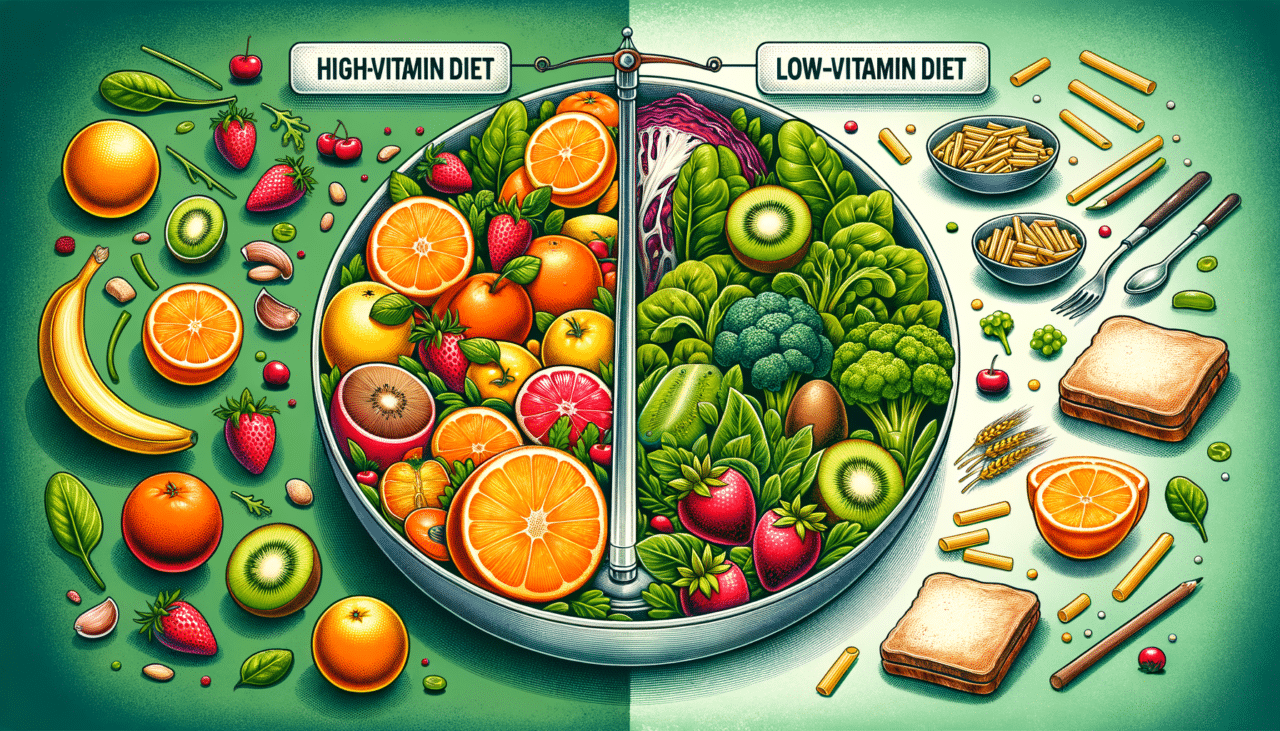In today’s health-conscious society, dietary choices play a pivotal role in determining overall well-being. Vitamins, essential micronutrients required for numerous bodily functions, are often the focal point of many dietary plans. Here, we delve into a detailed comparison between High-Vitamin Diets and Low-Vitamin Diets to help you make an informed decision about what’s best for your health goals.
High-Vitamin Diet
A High-Vitamin Diet emphasizes the consumption of foods rich in vitamins, catering to the body’s increased need for these vital nutrients. This diet is known for its diverse range of benefits, contributing to optimum health and vitality.
Characteristics:
- Nutrient-Dense Foods: Incorporates a variety of fruits, vegetables, nuts, seeds, whole grains, and lean proteins.
- Boosts Immunity: Provides the necessary vitamins to support and enhance the immune system.
- Promotes Energy and Vitality: Enhances metabolic processes, leading to increased energy levels.
- Improves Skin Health: Vitamins like A, C, and E are known to promote healthy skin.
- Supports Bone Health: Rich in vitamin D and calcium, crucial for maintaining strong bones.
- Antioxidant Properties: High in vitamins C and E, which help combat oxidative stress.
Low-Vitamin Diet
A Low-Vitamin Diet typically contains fewer food items rich in essential vitamins. Such a diet might be adopted due to specific health conditions, dietary restrictions, or personal preferences.
Characteristics:
- Limited Food Variety: Often involves a more restricted selection of food items.
- Potential Deficiencies: May lead to vitamin deficiencies if not carefully monitored.
- Calorie Focused: Sometimes chosen for caloric restriction rather than nutritional density.
- May Require Supplements: Individuals might need to supplement their diet to meet vitamin needs.
- Used in Specific Medical Conditions: Sometimes recommended for medical reasons, such as managing certain metabolic disorders.
Comparative Table: High-Vitamin Diet vs. Low-Vitamin Diet
| Feature | High-Vitamin Diet | Low-Vitamin Diet |
|---|---|---|
| Food Variety | High | Low |
| Nutritional Density | Rich in vitamins and nutrients | Limited in vitamin content |
| Energy Levels | Generally higher, due to enhanced metabolism | May lead to fatigue if not balanced |
| Immune Support | Strong, due to high vitamin intake | Weaker, potential for deficiencies |
| Skin Health | Promotes due to vitamins A, C, E | Might require topical or supplementary aid |
| Bone Health | Supports with vitamins D, calcium | Risk of bone health issues without supplements |
| Target Audience | Individuals seeking holistic health gains | Those with specific dietary needs or restrictions |
| Supplement Need | Generally not necessary | Often necessary to meet RDA for vitamins |
Conclusion
Choosing between a High-Vitamin Diet and a Low-Vitamin Diet depends largely on individual health goals, lifestyle, and any specific dietary needs. A High-Vitamin Diet is ideal for those seeking comprehensive health benefits, energy boosts, and enhanced immunity. On the other hand, a Low-Vitamin Diet might be suitable for individuals with specific health conditions or dietary limitations. Always consult with a healthcare provider or nutritionist when making significant dietary changes to ensure it aligns with your health needs.
By understanding the characteristics and impacts of each diet, you can better tailor your nutritional intake to optimize your health and well-being.

Comments (0)
There are no comments here yet, you can be the first!